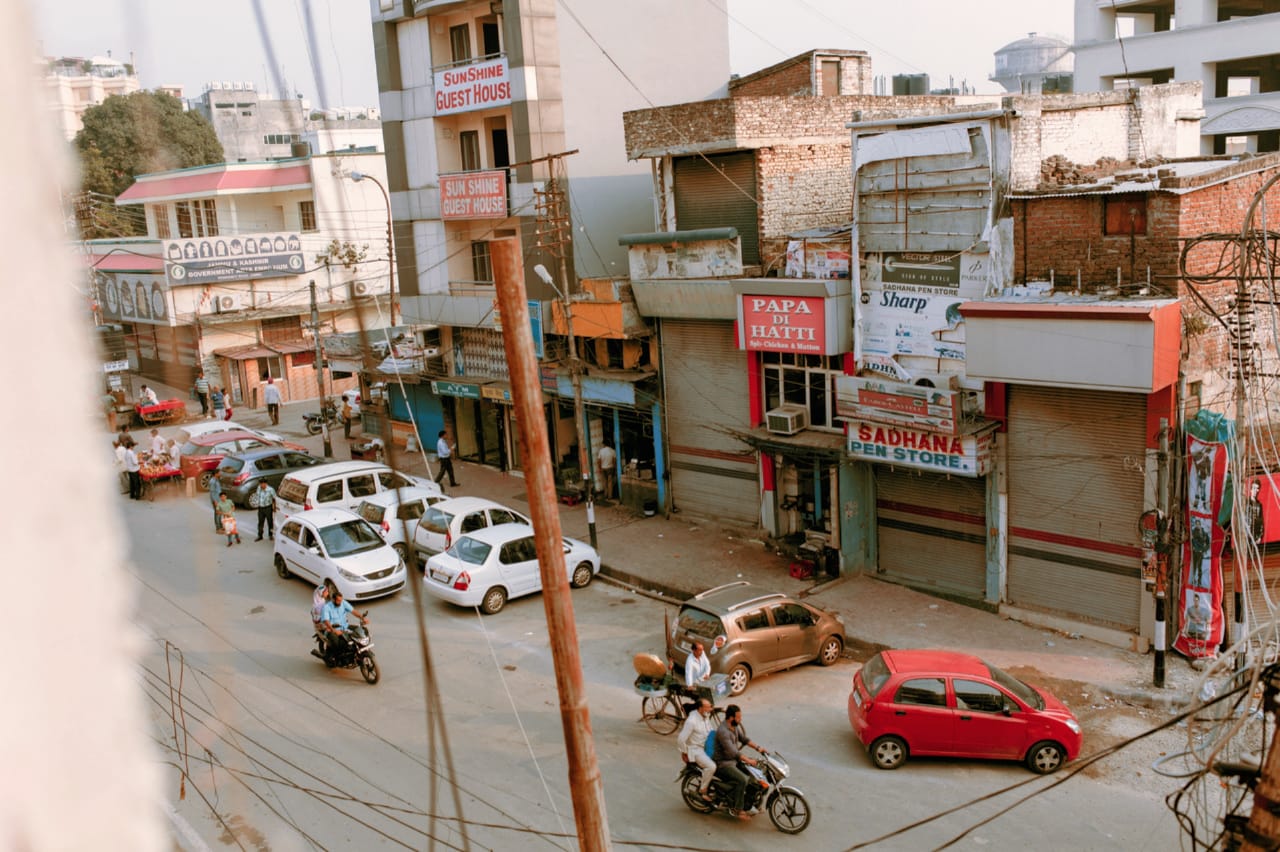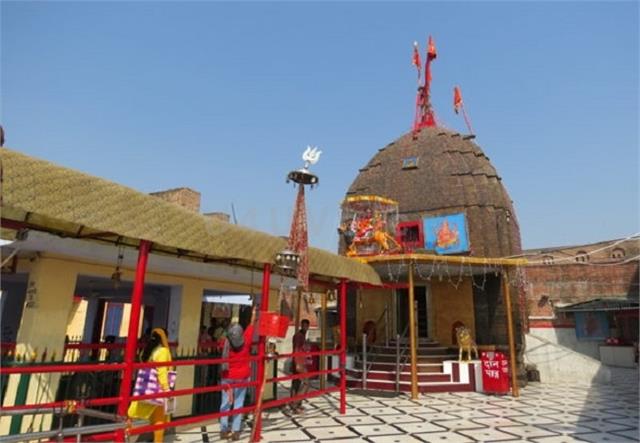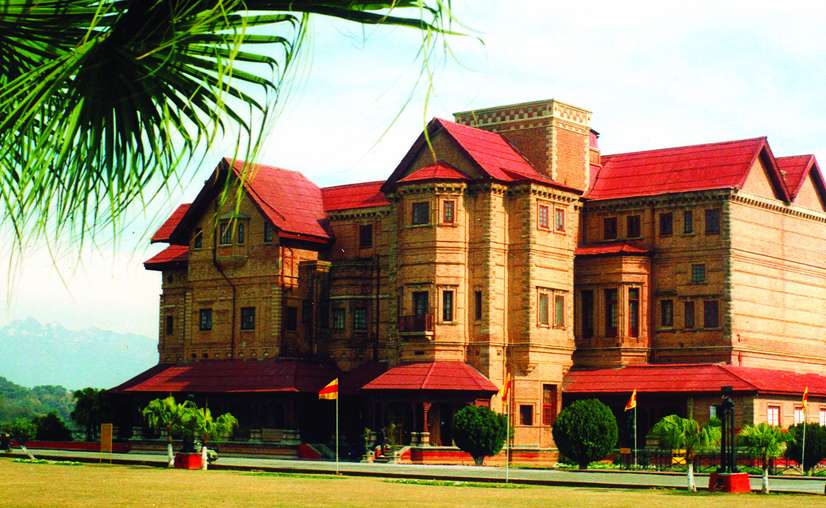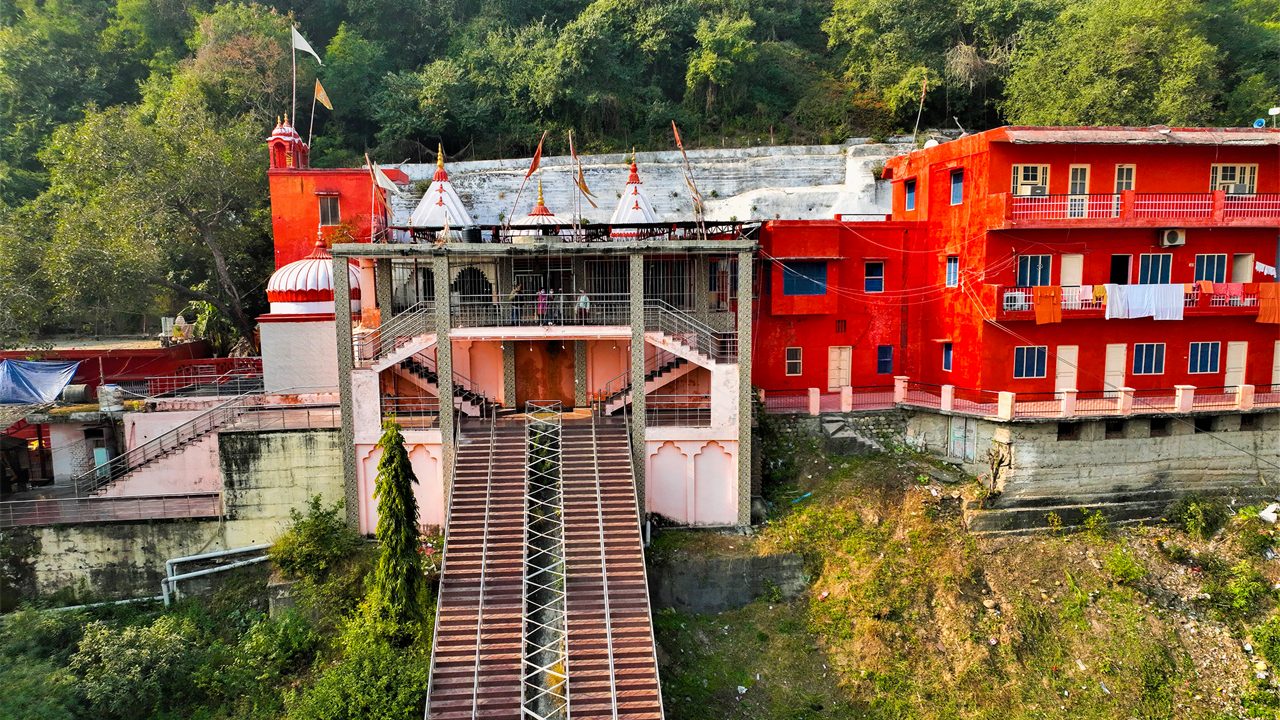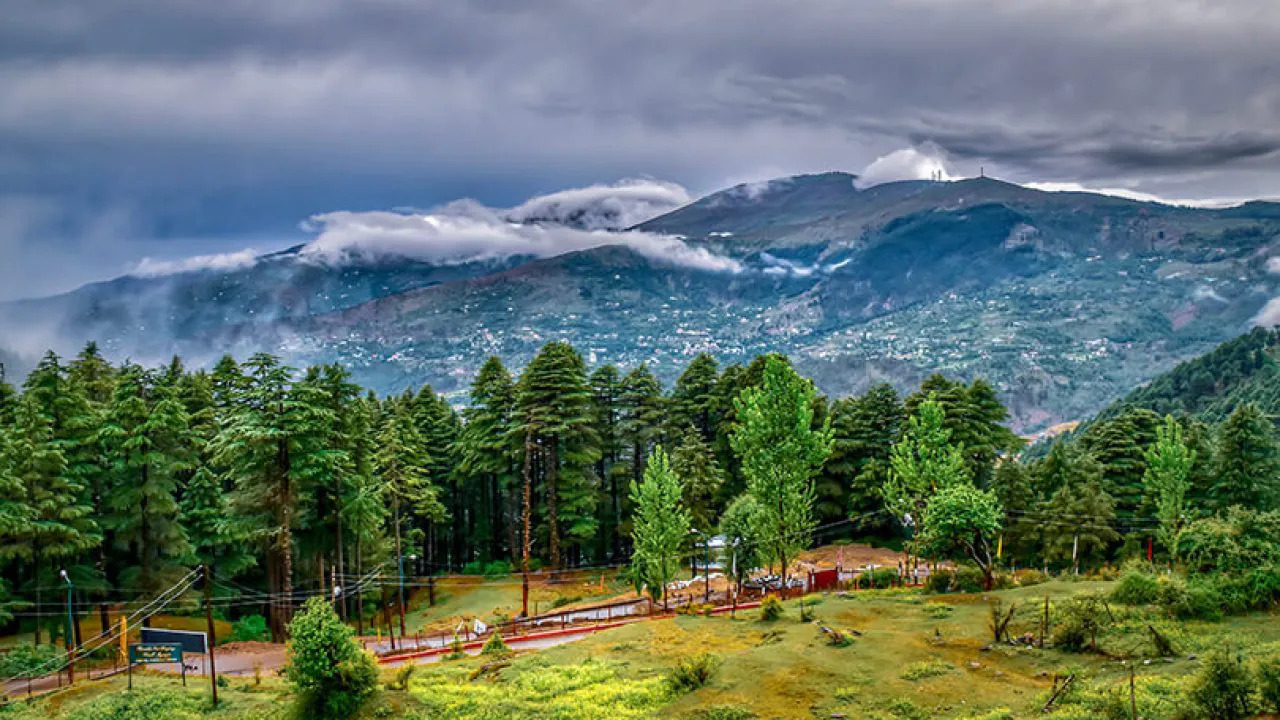Wave Wali Mata
Wave Wali Mata." The temple is dedicated to a local goddess, and the belief is that when devotees visit, they experience an unusual wave-like sensation or a mystical force, which is considered a sign of divine presence. This phenomenon is particularly noted during certain prayers or when the devotees are deep in worship. People also believe that the goddess here helps remove obstacles in one's life and grants peace to those who sincerely worship her. The exact origin of the "wave" sensation isn’t entirely clear, but it adds an air of mystery and spirituality to the temple, making it a popular spot for both locals and visitors seeking blessings. The temple itself is situated in a peaceful, serene location, offering a break from the hustle and bustle of city life. It’s a relatively lesser-known yet powerful place for worship, attracting a dedicated group of devotees.

Mubarak Mandi Palace
Mubarak Mandi Palace is a historic palace in Jammu, built in the 19th century by Maharaja Ranbir Singh. It was the royal residence of the Dogra rulers and blends Mughal, Rajput, and European architectural styles. The palace is known for its intricate woodwork, spacious courtyards, and grand windows, with stunning views from the upper floors. Key highlights include the Pink Hall and the Sheesh Mahal, both featuring intricate mirror work and frescoes. The palace is part of the Mubarak Mandi Heritage Complex, which also houses the Dogra Art Museum, showcasing royal artifacts, paintings, and manuscripts. While the palace faced neglect over time, efforts are being made to restore and preserve it. Located near key temples like Ranbireshwar and Raghunath, it’s a popular tourist attraction in Jammu.
Ragunath Temple
Situated in the heart of the city and surrounded by a group of other temples, this temple dedicated to Lord Rama is outstanding and unique in northern India. Work on the temple was started by Maharaja Gulab Singh, founder of the Kingdom of Jammu and Kashmir in 1835 AD and was completed by his son, Maharaja Ranbir Singh, in 1860 AD. The inner walls of the main temple are covered with gold sheet on three sides. There are many galleries with lakhs of 'Saligrams'. The surrounding temples are dedicated to various Gods and Goddesses connected with the epic Rarnayana.
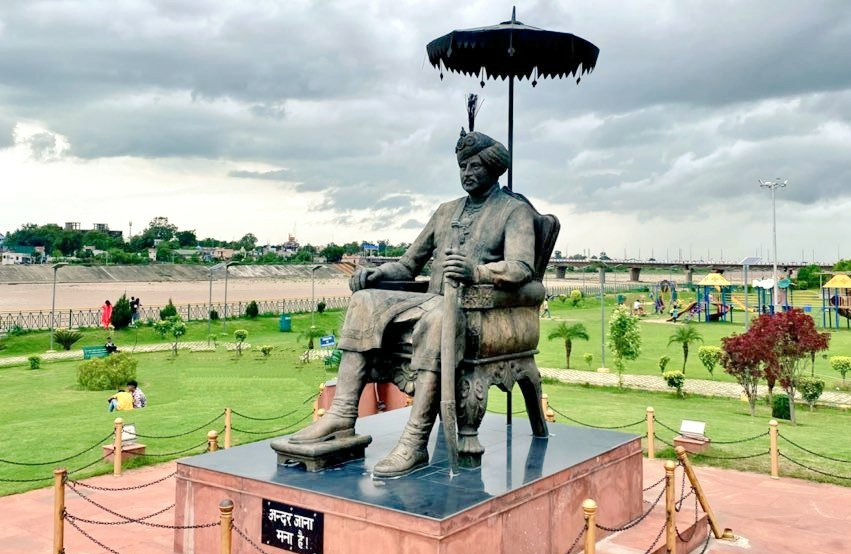
Hari Singh Park
Hari Singh Park is a public park located in Jammu, named after Maharaja Hari Singh, the last ruler of Jammu and Kashmir. The park is situated in a serene area of the city, offering a peaceful escape from the hustle and bustle of urban life. It is a popular spot for locals and tourists alike, providing a space for relaxation, walking, and enjoying nature. The park features beautiful landscaped gardens, well-maintained walking paths, and a variety of plants and trees. It's an ideal place for morning walks, jogs, or simply to sit and enjoy the surroundings. The lush greenery and peaceful atmosphere make it a perfect spot for families, nature lovers, and anyone looking to unwind. The park also includes a small pond and seating areas, adding to its charm. While it may not be as large or historically significant as some other attractions in Jammu, Hari Singh Park is well-loved for its tranquility and natural beauty.
Amar Mahal Palace
Amar Mahal Palace is a historic palace located in Jammu, and it stands as an important architectural landmark of the city. Built in the 19th century by Maharaja Amar Singh, the palace is located on a hilltop, offering beautiful views of the surrounding landscape, including the city of Jammu and the Tawi River. The architecture of the Amar Mahal Palace is a blend of French and Dogra styles, making it quite unique. The palace has large, spacious rooms, grand arches, and intricate woodwork. Its structure is characterized by beautiful balconies, towering windows, and detailed carvings, giving it a royal and elegant look. One of the highlights of the palace is the museum that has been set up inside. The museum displays a vast collection of royal artifacts, paintings, and sculptures, offering a glimpse into the history and culture of the Dogra dynasty. Among the most famous exhibits is the golden throne that was used by the Dogra kings, as well as various ancient manuscripts and royal portraits.
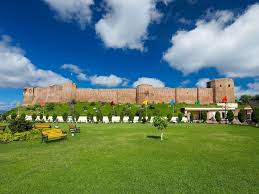
Bahu Fort
Bahu Fort is one of the most famous historical landmarks in Jammu, located on the banks of the Tawi River. The fort is believed to have been constructed around 3,000 years ago by the Dogra rulers, although the present structure was built during the reign of Maharaja Bahu Singh, after whom the fort is named. The fort holds significant cultural and historical value and is a popular tourist attraction in the region. The fort is situated on a hilltop, offering a panoramic view of Jammu city and the surrounding landscape, including the river Tawi and the lush hills in the distance. It is one of the oldest forts in Jammu and is well-known for its imposing structure and strategic location. Inside the fort, you'll find various temples, the most notable being the Bahu Mata Temple, which is dedicated to Goddess Kali. The temple attracts a large number of devotees, especially during festivals like Navratri. It is believed that the goddess fulfills the wishes of her devotees, making the fort a prominent religious spot as well as a historical one. The architecture of the fort is a mix of Hindu and Mughal styles, reflecting the diverse influences that shaped the region over time. The fort has large walls, narrow passageways, and a series of battlements that tell the story of the past. Over the centuries, Bahu Fort has been modified and expanded, with several additions by different rulers.
Peer Kho Cave
Peer Kho Cave is a historical and spiritual site located in Jammu, India. It is a revered cave temple dedicated to Shiva, and it holds a unique place in the religious landscape of Jammu. The cave is nestled in the foothills of the Trikuta Mountains and is situated near the Ranbireshwar Temple in Jammu city, making it an important spot for religious pilgrims. The cave is known for its serene and tranquil surroundings, attracting those who seek peace and spirituality. Devotees visit the cave to offer prayers and perform rituals to Lord Shiva, seeking his blessings. The temple is especially significant during the Shivaratri festival, which is celebrated with great enthusiasm at the site. The Peer Kho Cave itself is a natural cave and features an ancient Shiva Lingam, which is the central deity of worship. Pilgrims visit the cave to pray for well-being, prosperity, and spiritual growth. The temple complex around the cave is well-maintained, and the site also offers beautiful views of the surrounding hills and the city of Jammu. The cave is believed to have been in existence for centuries, with some stories suggesting that it dates back to ancient times. Over the years, the site has gained fame as a spiritual center, and it continues to attract both locals and tourists for its religious significance and peaceful atmosphere.
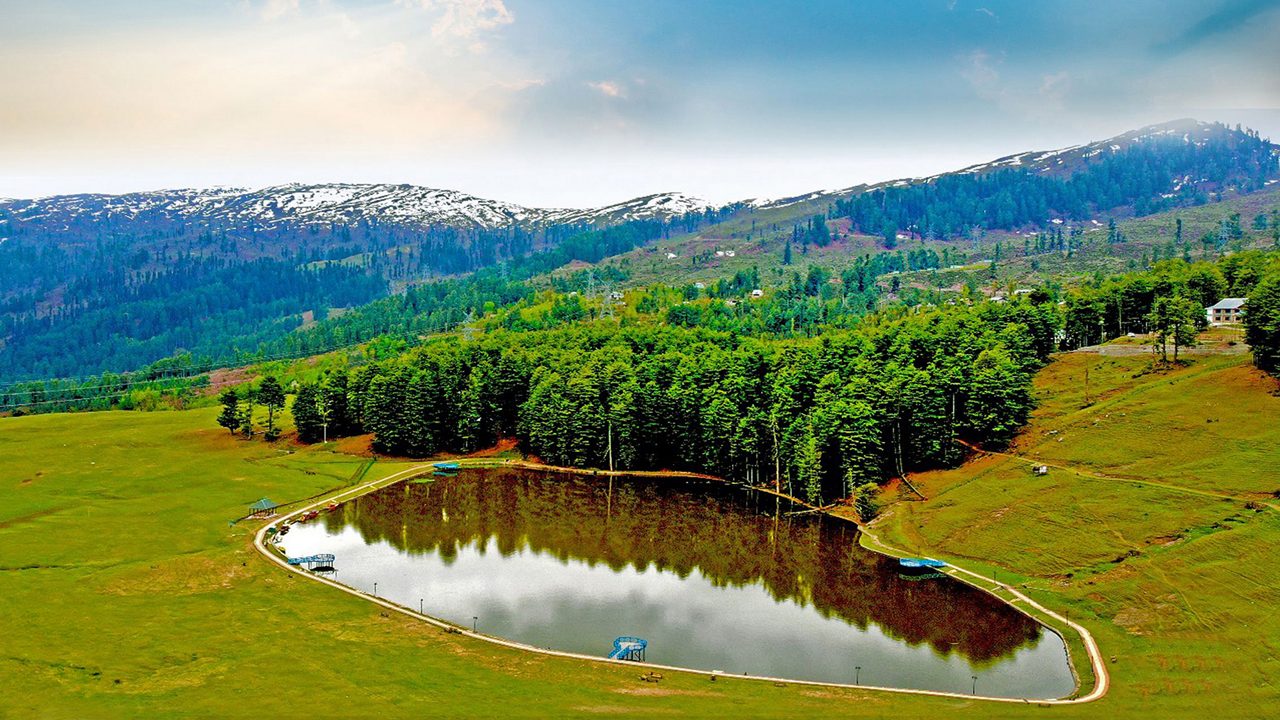
Sanasar Lake
Sanasar is about 17 kilometers away from Patnitop.Because of its picturesque landscapes and dense forests, it is famous for its aero-adventure sports.The main thrill-packed sports include rock climbing, parasailing, paragliding, bungee, skydiving, abseiling, and hot-air balloon.It is also known as “Mini Gulmarg”.
Patnitop
Patnitop is enveloped by thickly wooded forests, Patnitop offers beautiful picnic spots, peaceful walks and breathtaking views of the mountainscape of the Chenab basin. In winter, the resort is generally covered with a thick mantle of snow thus providing opportunities for various snow games including skiing. It is the best developed tourist spot of Jammu and is second to none in its natural charm, climate, pine forests and lush green cover. This famous hill resort is perched on a beautiful plateau, at an altitude of 2024 metres across which the Jammu- Srinagar Highway passes.
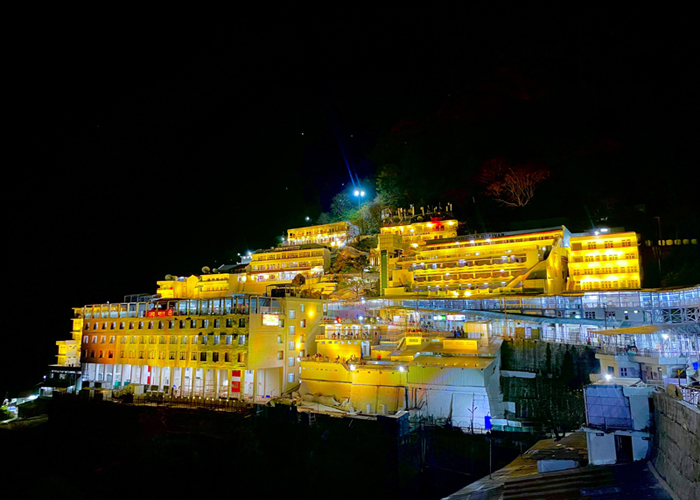
Vaishno Devi (Katra)
Vaishno Devi Temple, also known as the Shri Mata Vaishno Devi Temple and Vaishno Devi Bhavan, is a Hindu temple in Katra, Reasi district, Jammu and Kashmir, India. Dedicated to Vaishno Devi, a manifestation of godesses Mahakali, Mahalakshmi, and Mahasarasvati,[1][2][3][4] it is on Trikuta mountain at an elevation of 5,200 feet (1,500 meters).[5] The Shakti tradition considers it to be a Shakti Pitha.[6] The temple is 43 km from the main city of Jammu and 29 km from the district headquarters Reasi town. The temple is governed by the Shri Mata Vaishno Devi Shrine Board (SMVDSB) and has been chaired by the Governor of Jammu and Kashmir since August 1986.[7] It is one of the most popular [[Hindu pilgrimage sites in India], with millions of devotees visiting the temple annually.[8] In 2023 SMVDSB reported 9.52 million pilgrims.[9]




